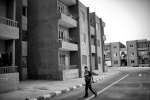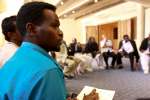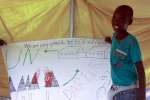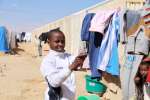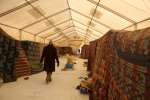- Text size
 |
|  |
|  |
| 
- Français
Hundreds return to Libya in desperate bid to reach Europe by boat
Briefing Notes, 17 May 2011
This is a summary of what was said by UNHCR spokesperson Melissa Fleming – to whom quoted text may be attributed – at the press briefing, on 17 May 2011, at the Palais des Nations in Geneva.
Hundreds of people who had fled Libya for Tunisia and Egypt in recent weeks, have crossed back into Libya with the intention of boarding boats to reach Europe. Among them are refugees, including members of the Somali, Ethiopian and Eritrean communities in the camps at Shousha near Tunisia's border with Libya.
UNHCR is in ongoing discussions with these communities, highlighting the risks involved in this journey at sea as well as the risks they take in crossing the Libyan border. In March, UNHCR learnt from the Somali community at Shousha camp that two Somalis were killed in Libya after they were shot after crossing back from Tunisia.
To date around 14,000 people have arrived by boat in Italy and Malta from Libya. Of this number 1,669 arrived on Friday and Saturday. Based on accounts from survivors and family members, over 1,200 people are unaccounted for since March 25.
UNHCR has met with refugees in Tripoli who are planning to make this treacherous journey. They are all fully aware of the high death toll, but they told us that they feel they have nothing to lose. One Eritrean man told us he would rather die trying to reach safety than continue to live in danger. Many have been living in Libya for several years; have faced periods of detention, and come from countries like Eritrea and Somalia where safe return is not a possibility.
Based on discussions with people who have arrived in Italy, we believe that thousands more will attempt to make this journey by sea. The majority have made the voyage in boats that are overladen with passengers and in a very poor state of repair. In addition, there is often no qualified skipper or crew to operate the boat, multiplying the risks. UNHCR repeats its call to all vessels on the Mediterranean to consider all boats departing Libya to be in need of assistance, and likely to face a situation of distress at some point in the journey.
We hope to be able to reestablish an international presence in western Libya soon. In the meantime our national staff and partners are running projects to assist refugees and asylum-seekers. We plan to expand this assistance in order to alleviate the hardship faced by many refugees. Many have told us that basic survival is a struggle with the departure of the expatriate population and the collapse of the Libyan economy.
UNHCR has teams of staff interviewing asylum-seekers and refugees in Egypt and Tunisia to assess their claims and, where possible, refer them for resettlement. It is with great sadness that UNHCR has learnt that people on track for resettlement following interviews last year in Libya lost their lives while trying to reach Europe recently. People in the middle of the resettlement process and vulnerable cases are prioritized in our interview schedule.
We estimate that 6,000 people will need resettlement from the borders of Egypt and Tunisia in the coming months, as well as 2000 from Cairo. So far 11 resettlement countries have offered over 900 resettlement places. In addition the United States has offered a significant, but unspecified number of resettlement places.
For further information on this topic, please contact:
- In Tunisia: Helene Caux on mobile: +216 928 27 423 or +41 79 217 31 93
- In Tunisia: Firas Kayal on mobile +216 508 561 99
- In Geneva: Sybella Wilkes on mobile +41 79 557 91 38
- In Geneva: Melissa Fleming on number +41 22 739 91 22










